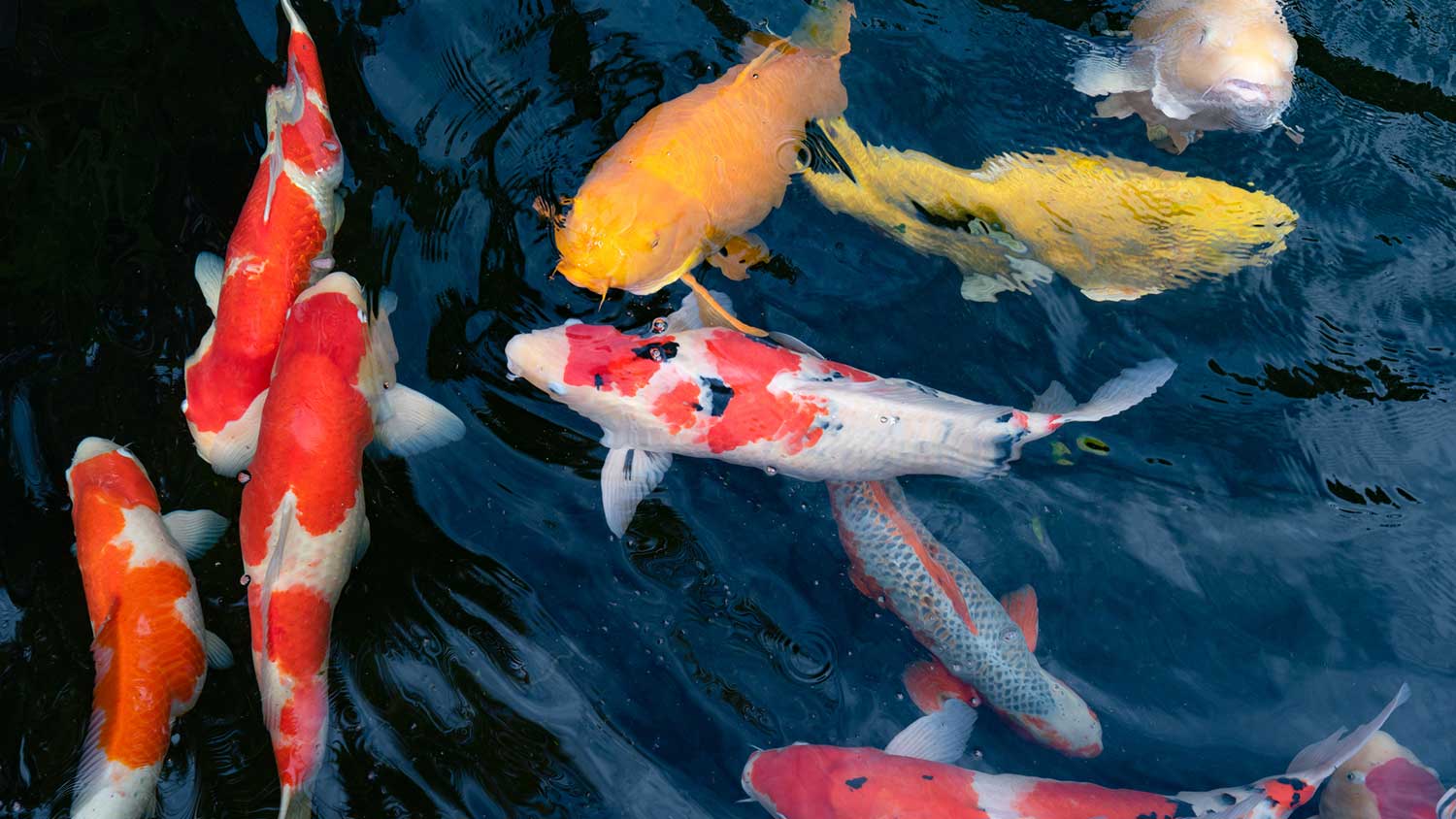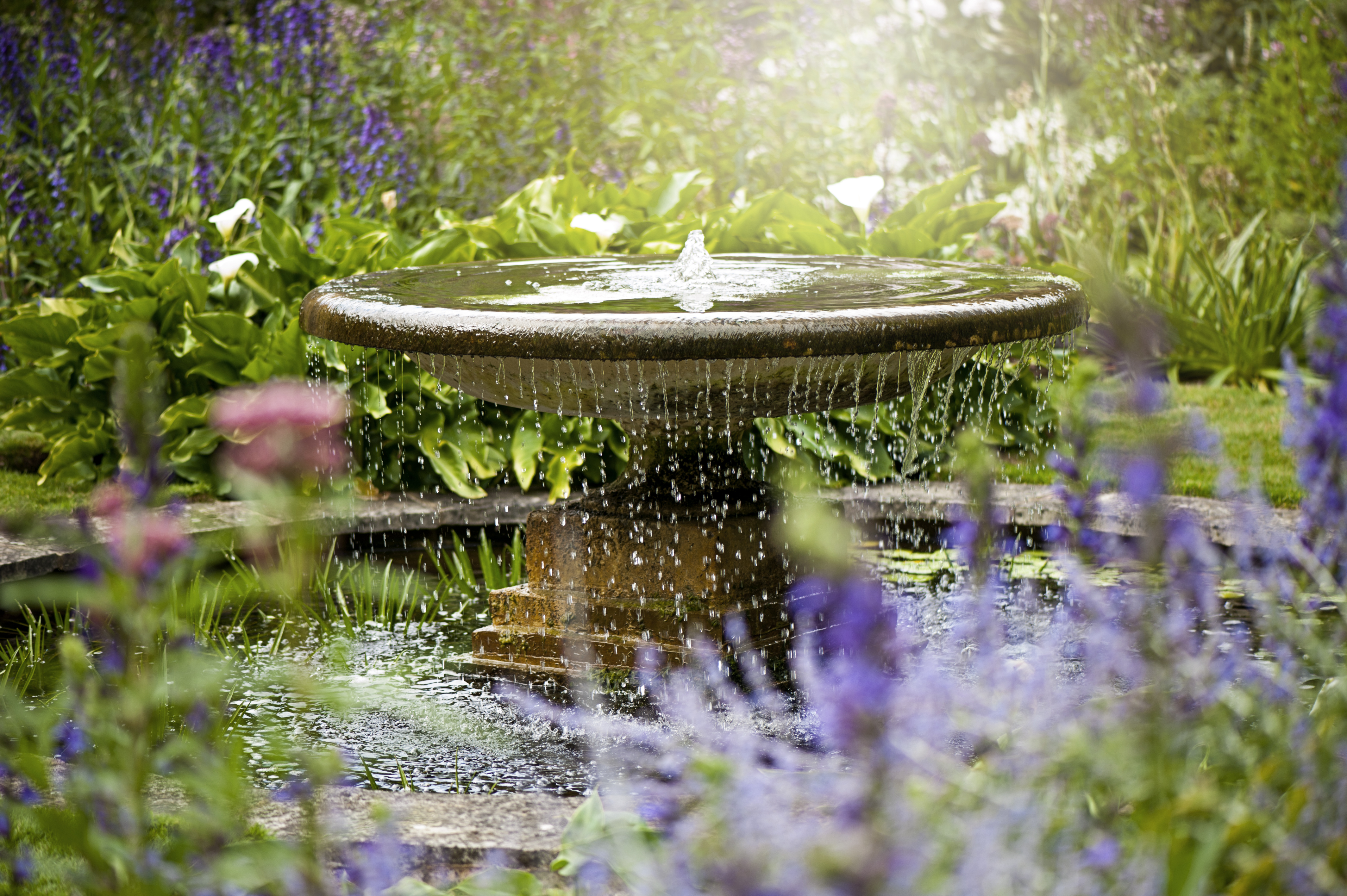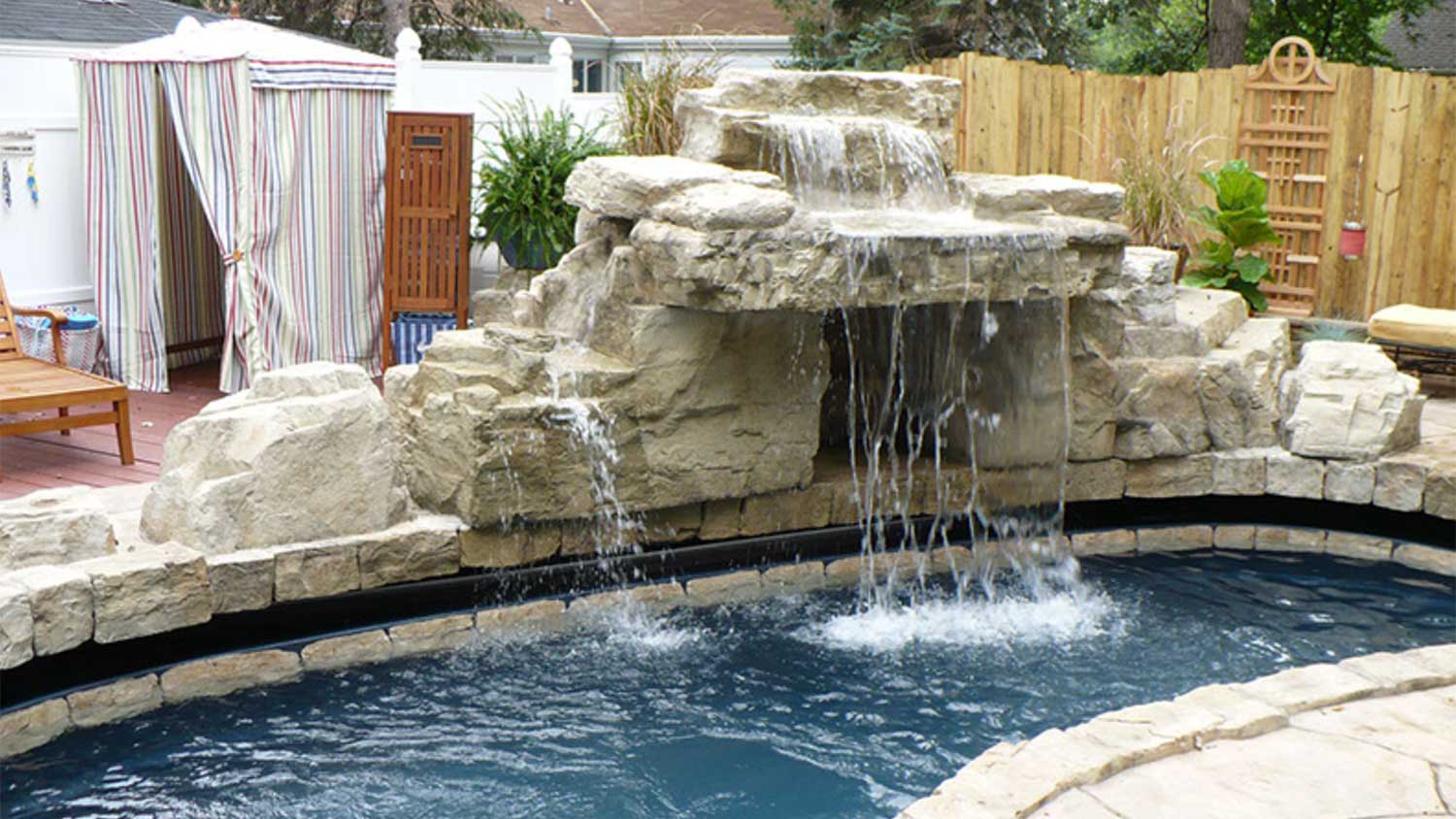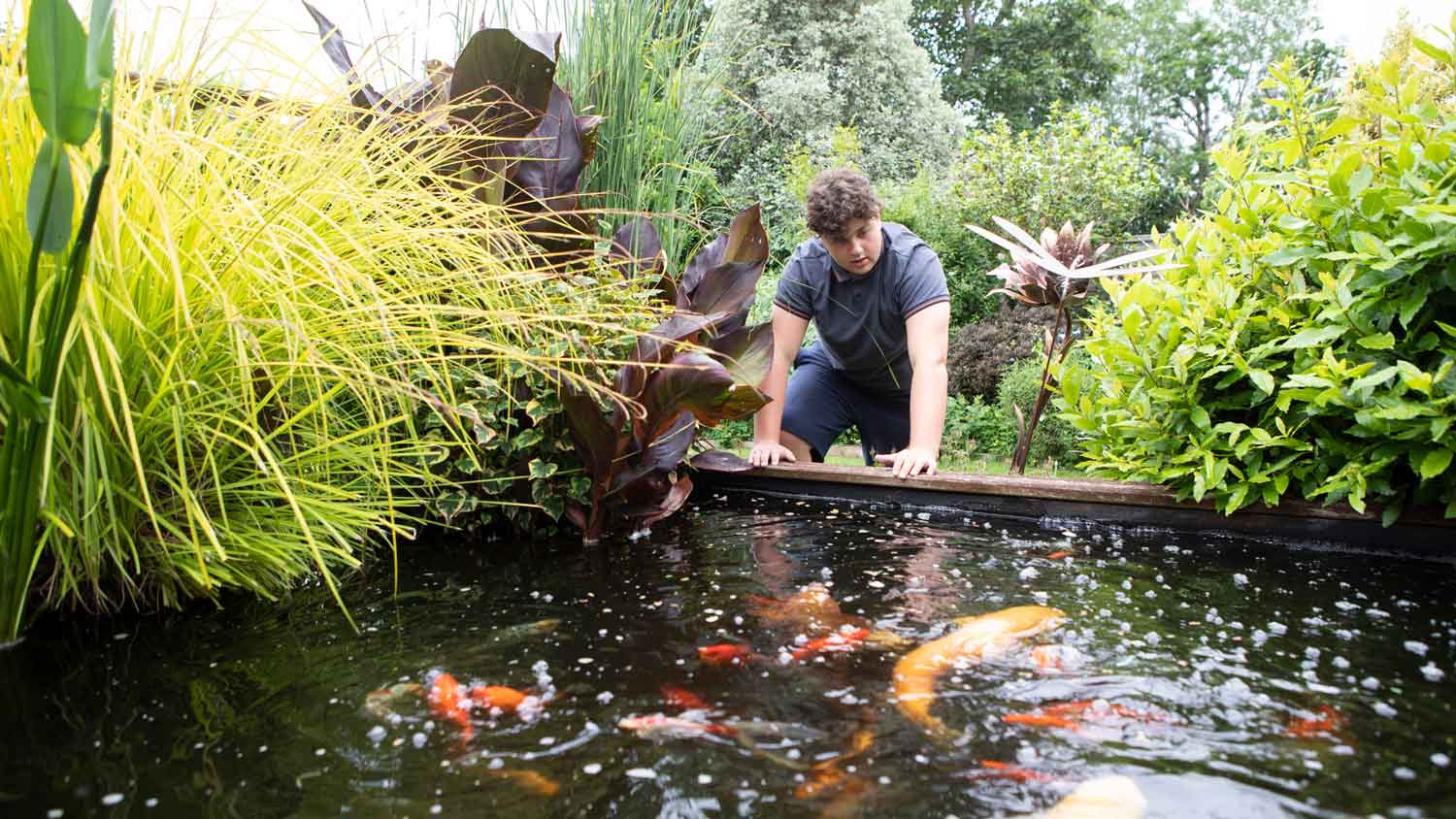
Discover how much it costs to build a pond. Learn about average prices, cost factors, and tips to plan your backyard pond project with confidence.
There's no need to be coy about your interest in koi pond care


Combine the gentle sounds of flowing water with a visit from a brightly colored koi, and you have yourself a true backyard haven of calm. Caring for a koi pond is not a passive hobby or low-maintenance lawn feature, but it can make a huge impact on the look and ambiance of your water feature. If you've recently moved into a home with a koi pond or had one installed by a local pond expert, here are nine basic tips to get you started on the art of koi pond maintenance and care.
Let's start off by reiterating that koi pond maintenance takes time and a lot of TLC. Koi pond owners even enter competitions to show off their ponds’ stellar maintenance and development. If you build a dependable schedule and know the elements of a healthy koi pond, this can become an excellent source of stress relief and make koi pond care for beginners easier to keep track of.
However, you will need to set time aside to feed your fish about once a day, test the quality of your koi pond water—more on this below—and perform seasonal maintenance.


There are many species of koi to choose from, with differing patterns, colors, scaling, and sizes. These impressive creatures can grow from just a few inches to 3 feet long. Koi are freshwater fish and require at least 50 to 100 gallons of water each, depending on their grown size. Koi also love company, so your pond will likely have at least two of the same species or a combination of koi and goldfish.
When introducing a new fish to your koi pond, speak with your pet store, distributor, or local koi pond service to follow proper quarantine and introduction tips to avoid shocking your fish.
The first step to excellent koi pond maintenance is excellent pond installation. While we'll assume for this guide that you already have a pond installed, it's important to know the parts of your pond for proper care. Let's take a look:
Pond liner: Designers line the bottom of a koi point with rubber, PVC, or concrete to keep water from leaking.
Filters and skimmers: These either sit at the waterline, beneath the water surface, or on your waterfall to clean bacteria and debris.
Water pump: Pumps are crucial to aerating the water for your koi. You'll find a large variety of large pumps to small aerators that sit at the bottom of the water.
Rocks and gravel: These keep the liner in place during storms and provide a spot for healthy bacteria growth. Be wary of decorative rocks that may contain unhealthy chemicals.
Plants: The right plant life adds nutrients, balances oxygen, and even offers a food source to your fish.
Pipes: Piping connects the filters, drains, and pumps and removes overflow water during a storm.
Choosing the right model or variety of each part comes down to where you live, the placement of your pond, and even what your koi prefer. Read all user guides carefully to ensure you purchase the right model when it’s time to bring your koi pond ideas to life.
Your koi pond is a living, breathing ecosystem that requires a bit of balancing in the world of your backyard. Your pump, filter, and plants will do a lot to keep your koi water clean, but not without your help. Too much heat, algae, or unwanted chemicals can be harmful to the water's oxygen levels, pH levels, and, therefore, the health of your koi.
Test the quality of your koi water with a testing strip one or two times a week for its pH, oxygen levels, ammonia, nitrates, lead, copper, iron, and zinc. These levels will also change after a large storm and after switching out part of the water each week. Be sure to budget for test strips as part of your pond maintenance costs—it’s an important part of keeping your koi pond in good condition.
Beneficial bacteria help to keep the water clean and reduce maintenance by introducing microorganisms that break down organic matter, like waste from fish, leaves, and sludge. It can also help to balance levels of nitrates and ammonia and prevent algae. You can order beneficial bacteria online or ask your local water feature contractor for recommendations. How much bacteria you’ll need to add will depend on the size of your koi pond and the existing water quality. Make sure to read and follow the instructions before using it in your koi pond.

Plants are a wonderful part of your koi ecosystem, contributing to oxygen levels, cutting down dangerous nutrient levels, and welcoming other pond creatures like frogs and snails. Your koi will like to snack on many common pond plants as well. Favorites include water lilies, water lotuses, water lettuce, and eelgrass.
Keep in mind that you must play the part of the gardener as well. Overgrowth or decomposed plants can throw off the balance of your pond when not properly pruned.
One of the most common rookie mistakes when growing a koi pond is overfeeding your fish. There's no hard-and-fast rule about how much and how often to feed your koi. The amount depends on the plants in the water, the time of year, and the size and type of your koi.
Overfeeding your koi can not only damage their health in some cases—such as in the winter when they may not completely digest food—but also add too much bacteria to the water.
Koi will eat one to four times a day at peak times in summer and just one to two times a week during colder months. If you live in a cold region, many koi do not eat throughout the winter when the water dips below 40 degrees.
While the beneficial bacteria you add to your koi pond will help break down organic matter, regularly removing fallen leaves and debris will help keep your pump and water features clear and functioning properly. Most importantly, it will allow you to see your fish better—and that’s the whole point!
From average costs to expert advice, get all the answers you need to get your job done.

Discover how much it costs to build a pond. Learn about average prices, cost factors, and tips to plan your backyard pond project with confidence.

Maintaining your backyard pond keeps it clean and in good condition. Learn how much pond maintenance costs and what factors can affect the price.

Discover the average outdoor water fountain installation cost, including key price factors and tips to help you budget for your project.

Discover the cost to add a waterfall to a pool. Learn about average prices, cost factors, and ways to save on your pool waterfall installation.

Discover how much it costs to stock a pond, including average prices, key cost factors, and tips to help homeowners plan their pond stocking project.

The right koi pond size is crucial for both the health of the fish and your enjoyment of the pond. Use this guide to figure out the right size for you.